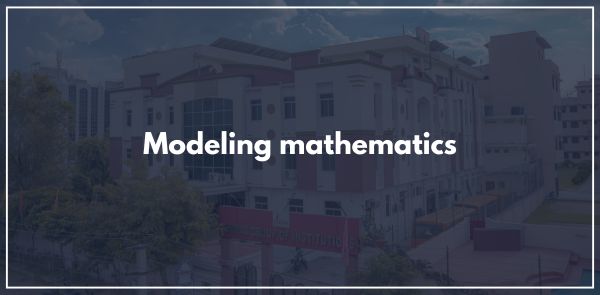It seems like you might be referring to "modeling mathematics," which typically involves using mathematical concepts and tools to represent and solve real-world problems. We can divides it in this types as-
- Statistical Modeling: Using statistics to analyze data and make predictions.
- Algebraic Modeling: Creating equations or functions to represent relationships between variables.
- Geometric Modeling: Using shapes and spatial reasoning to solve problems related to physical space.
- Calculus in Modeling: Applying concepts of calculus to model dynamic systems, such as growth or decay processes.
Algebraic modeling involves using algebraic expressions, equations, and functions to represent real-world situations. Here are some key concepts and steps typically involved in algebraic modeling:
We discus here Algebraic modeling
- Identify the Problem: Clearly define the real-world situation you want to model. This could be anything from a business scenario to a physical phenomenon.
- Define Variables: Assign variables to the quantities that are relevant to the problem. For example, if you are modeling profit, you might let xxx represent the number of items sold.
- Formulate Equations: Develop equations based on relationships between the variables. This often involves using mathematical operations and understanding the relationships at play (e.g., linear relationships, quadratic relationships).
- Solve the Equations: Use algebraic techniques to solve the equations you have formulated. This could involve finding values for your variables that satisfy the equations.
- Interpret the Solution: Translate the mathematical solution back into the context of the original problem. This is where you explain what the results mean in real-world terms.
- Validate the Model: Check if the model accurately represents the situation and make adjustments if necessary. This might involve comparing predictions to actual data.
Its Applications-
- Business: Profit and loss analysis, inventory management.
- Economics: Supply and demand models.
- Science: Modeling population growth, chemical reactions.
- Engineering: Stress-strain relationships in materials.
Poddar International College upholds high academic standards, ensuring that students receive a comprehensive education that prepares them for the challenges of the modern world.
With its unwavering commitment to excellence, Poddar International College is emerging as the best college in Jaipur and continues to shape the future of education and inspire generations to come by providing top UG and PG courses in Science, Arts and Commerce.
